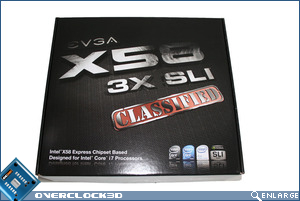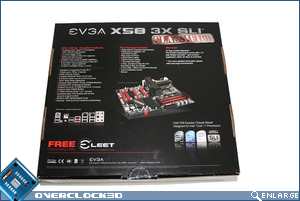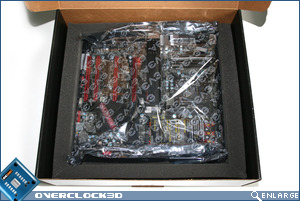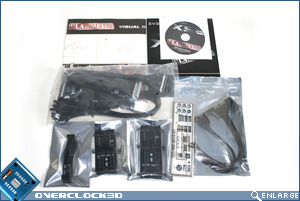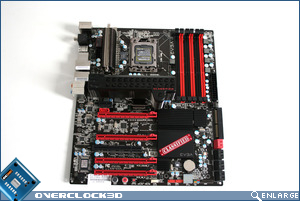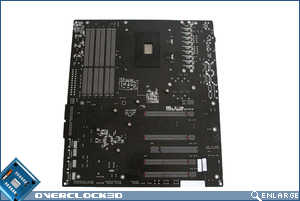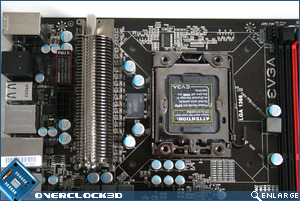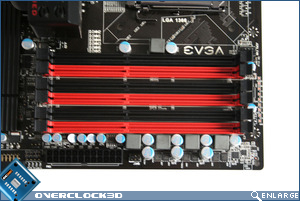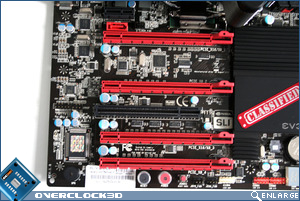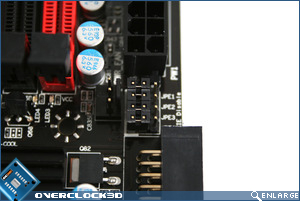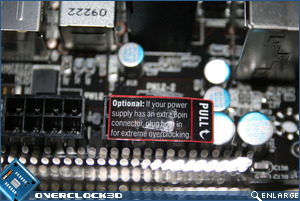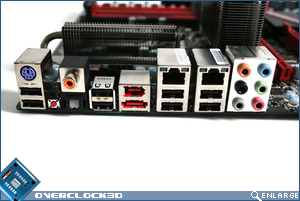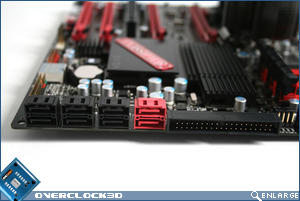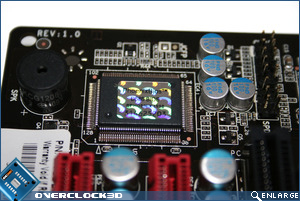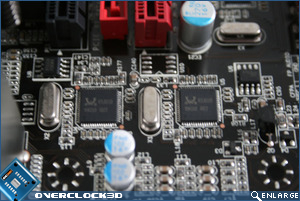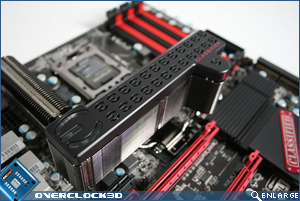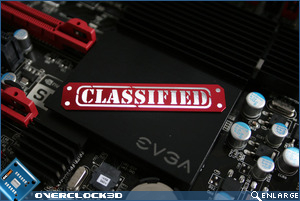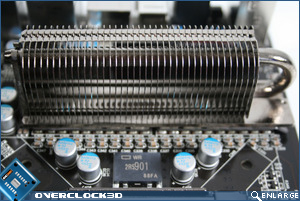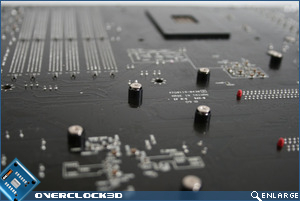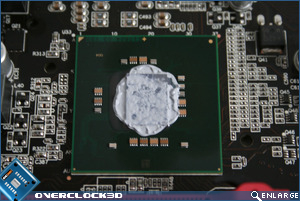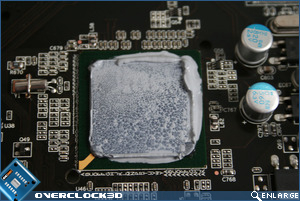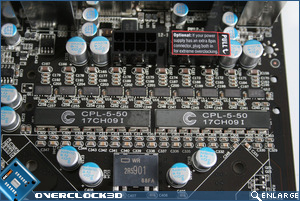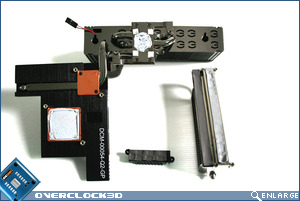EVGA X58 x3 Classified Motherboard
Packaging & Appearance
Â
The packaging of the classified is different to what we are normally used to here at OC3D. The flimsy removable outer sleeve that we are familiar with has gone, instead replaced with a stern printed cardboard box. I doubt very much whether potential buyers of the Classified will be too concerned with the exterior but indulge me while I highlight some of the finer points as packaging is still important in ensuring the motherboard and accessories reach you in perfect condition.
Â
The front of the box is very moody with the main title shadowed with a kickplate backdrop. The Classified logo is plastered underneath with the now all too familiar Intel logo’s as well as an NVidia SLI emblem. Turning the box over we find that EVGA list both the features and contents of the package along with EVGA statement that this product come with an amazing 10 year warranty (assuming you register the product within 30days of purchase)!Â
Â
Â
Opening the lid of the box IÂ was greeted with a split compartment containing the accessories, one side for the manuals and driver disk and the other for the mass of cabling. Lifting out this cardboard compartment revealed a securely packed, foam encased, static bagged motherboard. Unless your favourite delivery guy has a fondness for parcel basketball then IÂ cannot see how this package should arrive in anything other than A1 condition. The accessory list is what you would expect from a premium product with 6 SATA cables, 3x Molex to SATA power connectors, Firewire/USB bracket, 3 SLI Bridges (Various lengths – 2 fixed, 1 flexi), IDE cable, Rear I/O Backplate, and the accompanying manual and driver CD.
Â
Â
Moving on to the main attraction, the EVGA X58 3x Classified. First impressions are the motherboard is simply jaw dropping. Recently we have seen manufacturers putting in that little extra effort to ensure their boards are presented as aesthetically pleasing as possible. EVGA have gone that extra mile. The black PCB has contrasting red slots and barring the motherboard headers (which will no doubt be covered anyway) this is a two tone motherboard which is a stunner to behold. Glancing around the motherboard, everything appears to be laid out as efficiently as possible with all the connector found around the leading edge ensuring a tidy, easy installation. Flipping the board over we find nothing too disturbing with the CPU backplate area clear of any obstruction.
Â
Dominating the motherboard is the Northbridge (QPI bus) heatsink. Something else that we are not used to seeing is the inclusion of a fourth PCIe slot which EVGA claim allows the Classified to run 3x GPU’s in TRI-SLI along with a fourth GPU for Physics processing!
Â
Â
At first glance, the CPU socket area appears to be fairly restrictive but this is an illusion as the Northbridge heatsink is so large. Along with the NB heatsink is another oversized heatsink whic covers the main power delivery unit, the full digital PWM of the Classified. So while it may appear crowded at first, on further investigation the CPU socket area is surprisingly sparce and will no doubt be very appealing to those who like to play with extreme cooling. Worthy of note is the three times the amount of gold used on the CPU sockets pin area. This lowers the imedance of the current going through the pins resulting in less resistance of current that goes to the CPU and hence the 3x name in the product title. The color coded memory slots appear to be spaced far enough from the CPU socket area that fitting most oversized CPU coolers should not be an issue. Above the memory slots is a unique design allowing extreme clockers to read the correct voltage outputs of any voltage adjustment allowed in the BIOS.
Â
Â
Perhaps the major design feature of the 3x Classified is the ability to run un 3x GPU’s in TRI-SLI along with a fourth GPU for Physics. Most users I suspect will not require anything near that amount of GPU power save for folk who like to benchmark until the early hours. There is no doubting though that with a GPU capability such as the Classified affords, world records could well tumble should the classified fall into the right hands. Along with the four 16x PCIe slots is a further 1x PCIe slot which due to the NB, will be restricted in useable length. Last of all there is a legacy PCI slot allowing the ultimate in backwards compatability.
Â
A fantastic feature of the Classified is its ability to designate which 16x slots can be used at full bandwidth. No longer are you restricted to which port you wish have to use, with a set of four jumpers you have the choice of setting which PCIe slots will be used for GPUs. For example you can set the jumpers to use both 1st and third slots fot an SLIÂ configuration, thus allowing the best amount of airflow through the cards or indeed if you wish to make use of the PCI slot. Should you wish to use TRI SLI without wanting the final card to overhang the bottom of the board (a fault with so many X58 motherboards) you can set it up so. However, EVGA are keen to show off their prowess in this field by allowing all four slots to be filled making the Classified one of the most versatile motherboards around.
Â
Below the PCIe slots is are the power, rest and CMOS clear button. The Power switch glows up red and the rest button doubles as a hard disk activity light, flashing yellow when the hard drive is seeking. To the extreme bottom left corner we also find that there is an on-board speaker. While this feature is becomming a rarity these days thanks to debug LED’s, IÂ do find that the beep when powering the motherboard up for the first time is still a reasuring sound.
Â
Â
The bottom right hand quarter of the mainboard is a feature packed goldmine of gadgetry. An IDE port and 8 SATA ports line the leading edge along with colour coded motherboard headers, two external USB headers, CMOS chip, EVGA control panel (available separately) header and a diagnostic LED. This LED also doubles as a temperature readout for the CPU once the system is fully booted which is a very usefull feature although in testing the temperature was a over 10c lower than most popular software based utilities, perhaps due to the fact different sensors were being scanned. Another neat feature of the Classified, and perhaps one most appealing to the extreme overclockers using LN2/DICE will be the ability to supply up to 600W to the CPU. This is done by using an additional 8 pin12v+ EPS connector which along with the digital PWM should ensure the cleanest possible power delivery to your silicon. While IÂ cannot see this feature being neccesary to anyone but the extreme clockers it is certainly a welcome addition which may tempt watercoolers to take that extra step into the wonderfull world of liquid Nitrogen.
Â
Â
The I/O backplate area is populated to the max with 8 x USB ports, 6 x 3.5mm Audio jacks (capable of 7.1 audio), optical and coaxial SPDIF outputs, PS/2 Keyboard port, , e-SATA, Firewire, dual Gigabit LAN NIC ports and a tiny CMOS clear button. With the backplate in-situ, the CMOSÂ clear button hardly protrudes from the plate and IÂ would have like to have seen a better button design here but this is a minor point for what is a very well designed I/O area.The eight SATAÂ ports (+ additional one above 1st PCIe slot) support RAID 0, 1, 0+1, 5 and JBOD arrays. The three red ports are controlled by the Jmicron JMB363 controller while the six black ports are controlled by the Intel ICH10r chip.
Â
Â
The D686 BIOS chip on the EVGA Classified (covered in the next section) is based on the Pheonix-Award BIOS which should make it easy to navigate if any of EVGA’s previous BIOS setups are anything to go by. Audio for the Classified is provided by with the ALC889 chip, the latest CODEC offering from Realtec. This chip supports 7.1+2 channel multi streaming audio, Nosie supression HDCPM along with acoustic cancellation. In testing this chip, while certainly adequate still lacks the thrust of a good bass note and can appear ‘tinny’ at times. Another Realtec offereing on the classified is the RTL8111C, two of them in fact which control the Gigabit ethernet controllers found on the backplate.
Â
Â
The most dominating feature of the mainboard is the main X58 chipset heatsink. This huge heatsink is the size of a small GPU and is covered by a plastic cover which serves no purpose other than to enhance the looks of the whole mainboard. This cover has a pulsating ‘e’ which glows on and off when the board is recieiving power, even in standby state. I must confess IÂ do like the look of it and it will certainly look the part in any case bar the older Lian LI cases which have the board placed upside down, in which case it will look odd. Both this heatsink and the flat anodised heatsink covering the ICH10R chip are linked together by a flattened heatpipe ensuring that for the msot part, all the heat is dissipated by the main tower heatsink.
Â
Â
The heatsink covering the digital PWM area is akin to heatsinks made by Thermalright which is no bad thing and while this sink stands alone, not being connected to the other heatsinks, it appeared to keep the power delivery area cool enough not to interupt stability while testing. Removing the heatsinks was a very simple affair thanks to the screw design EVGA have employed.
Â
Â
Hopefully, here is why you have chosen to read the OC3D review of the EVGA Classified as here is where we get down to the guts of the motherboard. Let me start by saying the EVGA classified comes in 3 varients, the e759, e760 and e761. Only the 759 has the nForce200 chip which allows 16x on all PCIe slots.
Â
The version we have here is the 760 which DOESÂ NOT have the nf200 chip. I know this because while some other sites simply assume it has, I took the trouble to look for myself and while the heatsink indicates there should indeed be a chip there, no such chip was on the mainboard itself. While this is disappointing, the practical uses of the very expensive chip are now somewhat depleted thanks to X58 supporting SLIÂ out of the box. The only real neccesity of the nf200 chip is for users who plan on filling all of the slots up and need the full bandwidth of 16 lanes each. Only a quad SLI setup will see any tangible benefit from using such a setup and as such for the most part the standard X58 chipset will do very nicely. Not only that but the nf200 chip is rumoured to increase latency so while it does provide more bandwidth for the cards, the higher latency will for the most part, offset this advantage. The e761 version is an exact replica of the 760 except it has the optional ECP (external control panel) included in the package.
Â
Â
The 10 Phase digital PWM is a class leading power delivery product and while other motherboards also make use of this more expensive form of power handling, the classified has the ability to switch frequencies via the BIOS upto 1333MHz. What this means is that the EVGA Classified will have a much smoother power delivery than it’s competitors. Below we see the heatsink assembly which as you can see has a copper plate for the missing nf200 chip, a copper plate for the ICH10R and the X58 core is cooled by the gun metal plate upon which sits the huge tower cooler. The PWM cooler is staggered and has thermal tape to conduct heat as does the additional mosfet cooler.
Â
Â
It was clear from the outset that the EVGA 3x SLI Classified is an extreme motherboard built from the ground up for the extreme enthusiast. Quality exudes the package from both the exterior and the interior and while IÂ was innitially dissappointed to find that this was the 760 version rather than the 759, all things considered it’s very hard to fault the mainboard or the package as a whole.
Â
Let’s take a look at that Pheonix-Award BIOS….
 Â



